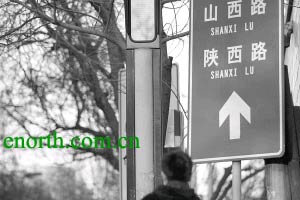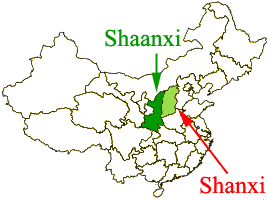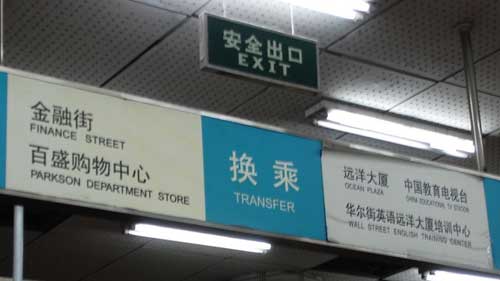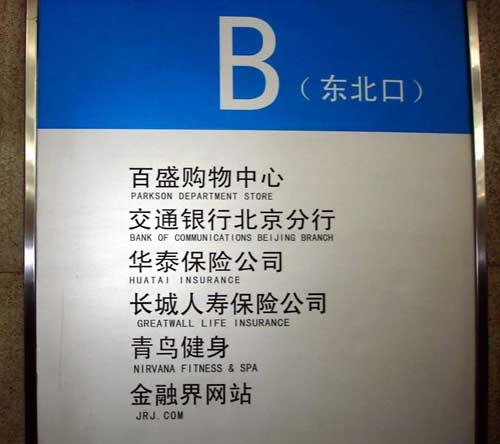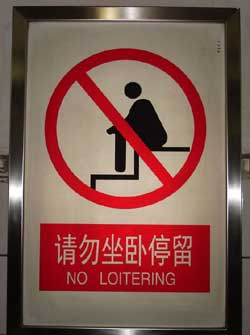Many of the stories I come across in my searches for news about Pinyin are related to input methods for Chinese characters. But I seldom find anything of interest in these. They tend to follow the same template: someone is touting a great new character-input method that is just so much better than Pinyin and everything else. It’s going to save Chinese characters and thus Chinese civilization and all that is good in the universe, etc. Blah, blah, blah. I just get bored.
But I recently came across one widely reprinted article that’s a bit more interesting and amusing/alarming/absurd. It has the additional advantage of being about the claims of a member of the PRC’s Chinese People’s Political Consultative Conference. Here’s the key paragraph:
Chén Duó wěiyuán shuō: “Shǒujī Hànzì shūrù jìshù yīlài wàiguó gōngsī zhìshǎo zàochéng sān dà wèntí. Shǒuxiān, wàiguó gōngsī de Hànzì shūrùfǎ pòhuài le wǒmen shǐyòng Hànyǔ Hànzì de chuántǒng sīwéi xíguàn, dǎozhì Hànwén huà yánghuà, yìhuà, tuìhuà; qícì, wàiguó gōngsī bù zhíxíng wǒguó 27,484 gè zì de qiángzhìxìng biāozhǔn, biānmǎ zì liáng zhǐyǒu 6,763 gè zì, zàochéng Hànzì shǐyòng hùnluàn, Hànzì wénběn xìnxī shīzhēn, yǐngxiǎng guójiā xìnxī ānquán; hái yǒu, Zhōngguó měinián huā jǐ yì yuán gòumǎi wàiguó gōngsī de Hànzì shūrù ruǎnjiàn, yèjiè liǎnmiàn hézài? Hànzì wénhuà de zūnyán, quánwēi bèi zhìyú hédì?”
Committee member Chen Duo said: “The reliance of mobile phones on foreign corporations’ Chinese character input technology creates at least three major problems. First, foreign corporation’s Chinese character input methods are destroying the traditional patterns for thinking about using Chinese characters and are Westernizing Chinese culture, [causing it to be] alienated and degenerate. Next, foreign corporations are not complying with our country’s compulsory standard of 27,484 characters, using instead only 6,763 characters, which wreaks chaos in the use of Chinese characters, distorts Chinese character text messages, and affects national information security. Also, China spends hundreds of millions of yuan every year on Chinese character input software. Where is the self respect of the [domestic] industry? The dignity and prestige of the culture of Chinese characters — where have they been put?
About a week later Liu Naiqiang (刘廼强), another member of the Chinese People’s Political Consultative Conference, was touting the “fool” (shǎguā) character-input method, whatever that is, and warning against Pinyin.
Here is the whole article about Chen Duo:
“Wǒguó yǒu chāoguò 4.6 yì shǒujī yònghù, jū quánqiú dìyī, dàn yǒu jiǔchéng yònghù shūrù Hànzì shí, shǐyòng de shì wàiguó jìshù!” láizì xīnwén chūbǎnjiè de quánguó Zhèngxié wěiyuán Chén Duó zài quánguó Zhèngxié shí jiè wǔ cì huìyì gānggang kāishǐ shí, biàn tíjiāo le yī fèn zhǔnbèi hěn jiǔ de tí’àn, jiànyì jǐnkuài shíshī shùzì jiànpán Hànzì shūrù guójiā biāozhǔn, niǔzhuǎn wǒguó shǒujī Hànzì shūrù jìshù shòukòng yú wàiguó gōngsī de júmiàn.
Chén Duó wěiyuán shuō: “shǒujī Hànzì shūrù jìshù yīlài wàiguó gōngsī zhìshǎo zàochéng sān dà wèntí. Shǒuxiān, wàiguó gōngsī de Hànzì shūrùfǎ pòhuài le wǒmen shǐyòng Hànyǔ Hànzì de chuántǒng sīwéi xíguàn, dǎozhì Hànwén huà yánghuà, yìhuà, tuìhuà; qícì, wàiguó gōngsī bù zhíxíng wǒguó 27,484 gè zì de qiángzhìxìng biāozhǔn, biānmǎ zì liáng zhǐyǒu 6,763 gè zì, zàochéng Hànzì shǐyòng hùnluàn, Hànzì wénběn xìnxī shīzhēn, yǐngxiǎng guójiā xìnxī ‘ānquán; hái yǒu, Zhōngguó měinián huā jǐ yì yuán gòumǎi wàiguó gōngsī de Hànzì shūrù ruǎnjiàn, yèjiè liǎnmiàn hézài? Hànzì wénhuà de zūnyán, quánwēi bèi zhìyú hédì?”
Chén Duó jīngguò diàoyán huòxī, yóu Zhōngguórén zìzhǔ kāifā de guó bǐ shūrù jìshù zì liáng 27,484 gè, pīnyīn shūrù sùdù Bǐguó wài shūrùfǎ kuàijiāng jìn sì chéng, bǐhuà shūrù Bǐguó wài shūrùfǎ kuài yībàn, yīn xíng zǔhé shūrù Bǐguó wài pīnyīn shūrùfǎ kuài jìn qīchéng. Tā rènwéi, “guó bǐ cǎijí jìsuàn le shù bǎiyì zì de Zhōngguó bǎixìng xíguàn yòngyǔ yòng cí, yōngyǒu gèxìng huà de zhìnéng tiáopín wénzì shūrù fāng’àn, yínghé le Zhōngguó bǎixìng shǐyòng Hànyǔ Hànzì de chuántǒng sīwéi guànxìng, shǐ wénzì shūrù gèng liúchàng, fāngbiàn, shíyòng. “2006 nián 10 yuè, xìnxī chǎnyè bù zhàokāi le yǐ guó bǐ shūrùfǎ wéizhǔ dǎo de guójiā biāozhǔn 《xìnxī jìshù shùzì jiànpán Hànzì shūrù tōngyòng yāoqiú》 zhēngqiú yìjiàn huì, chàngyì quánguó gè dàshǒu jī shèjì shāng, zhìzàoshāng děng cǎiyòng wǒguó zìzhǔ chuàngxīn de Hànzì shūrùfǎ.
Chén Duó wěiyuán shuō, jǐnguǎn guó bǐ shūrù jìshù yǐ qiànrù le kāng jiā, jīn lì, yǔ lóng, TCL děng zhōngduān chǎnpǐn, dǎkāi le shìchǎng de quēkǒu, dàn yóuyú shūrù jìshù shìyǐ qiànrù jìshù de fāngshì jìnrù shìchǎng, zhǔnrù ménkǎn gāo, zhōuqī cháng; zhàn wǒguó 60% yǐshàng shǒujī shìchǎng de jǐ dàguó wài pǐnpái shāng, cúnzài cǎigòu wàiguó gōngsī ruǎnjiàn de guànxìng, yǒude guónèi shǒujī chǎngshāng yě mángmù chóngbài guówài chǎnpǐn; jiāshàng shuǐhuò shǒujī jí shǎo fùfèi děng yuányīn, guónèi de Hànzì shūrù jìshù yào yǔguó wài yǐjing xíngchéng lǒngduàn de gōngsī jìngzhēng, nándù fēicháng dà; jiāzhī zhè xiàng jìshù de ménkǎn jiàogāo, jíshǐ qiāndìng le hézuò xiéyì, cóngxīn shǒujī yánfā dào chéngshú de chǎnpǐn chūchǎng zhìshǎo xūyào 9 ge yuè de shíjiān, zhège guòchéng rúguǒ méiyǒu hěn hǎode jìshù bǎozhàng hédà liáng zījīn zhīchí, hěn nán wéichí xiaqu.
Wèicǐ, Chén Duó jiànyì guójiā yǒuguān bùmén cǎiqǔ qièshí cuòshī tuīdòng shùzì jiànpán Hànzì shūrù guójiā biāozhǔn de shíshī, jiāndū hé yǐndǎo yǒuguān shēngchǎn shāng zhíxíng guójiā biāozhǔn, tuījìn guóchǎn shǒujī Hànzì shūrù jìshù chǎnyèhuà, bìng cóng fúzhí zìzhǔ chuàngxīn de jiǎodù chūfā, duì qí jǐyǔ zhèngcèxìng zhīchí.
sources:
- Chén Duó wěiyuán jiànyì jǐnkuài shíshī shùzì jiànpán Hànzì shūrù guójiā biāozhǔn (陈铎委员建议尽快实施数字键盘汉字输入国家标准), 中国政府网, March 5, 2007
- Jiànyì kāifā guójiā biāozhǔn Zhōngwén “shǎguā” shūrùfǎ (建议开发国家标准中文“傻瓜”输入法), Shēnzhèn xīnwén wǎng — Shēnzhèn tèqū bào, March 13, 2007
“只有顺着中文书写逻辑,以字形和笔顺为基础,不用学、不用记,人人都很快上手的‘傻瓜输入法’才能成为全球通用的中文输入法。国家应尽快将‘傻瓜输入法’开发出来。”全国政协委员刘廼强说。
现在社会上的中文输入法很多,像目前最流行的繁体“仓颉”、“简易”,简体的“五笔”等,但刘廼强认为它们是为要求速度的专业人员设计的,不适合现在人人都要自己输入,速度不是最重要要求的现实状况。
至于“拼音”输入法,刘廼强则认为,虽然繁简皆宜,更无须特别学和记,只要统一拼音标准,按道理是不错的全球通用的输入方法。“问题是中文不是语音语言,老用拼音输入法,很容易就会执笔忘字。实践证明,彻底拼音化决不是中文发展的正确方向,因而也不是中文输入应发展的方向,因为这样下去,中文便会萎缩灭亡。”

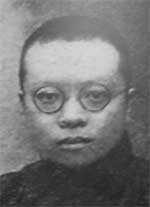 Two days ago was the 68th anniversary of the death of Qian Xuantong (Qián Xuántóng / 錢玄同 / 钱玄同 / Ch’ien Hsüan-t’ung) (1887–1939), a phonetician, philologist, and professor of literature at
Two days ago was the 68th anniversary of the death of Qian Xuantong (Qián Xuántóng / 錢玄同 / 钱玄同 / Ch’ien Hsüan-t’ung) (1887–1939), a phonetician, philologist, and professor of literature at 